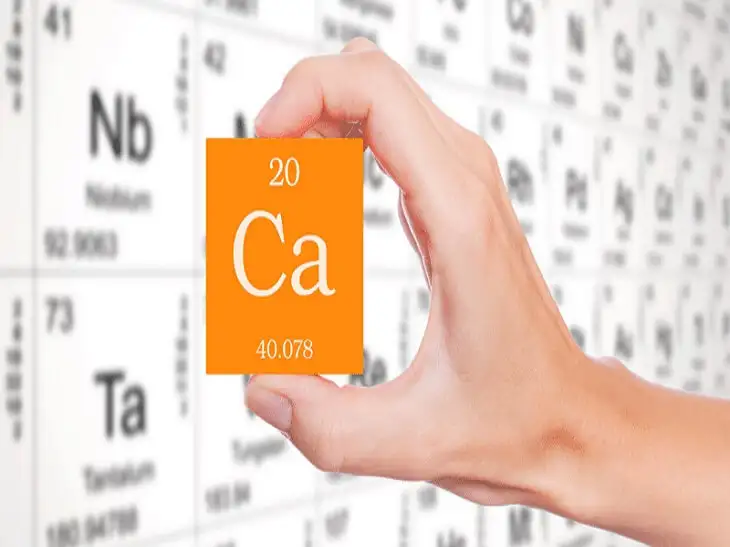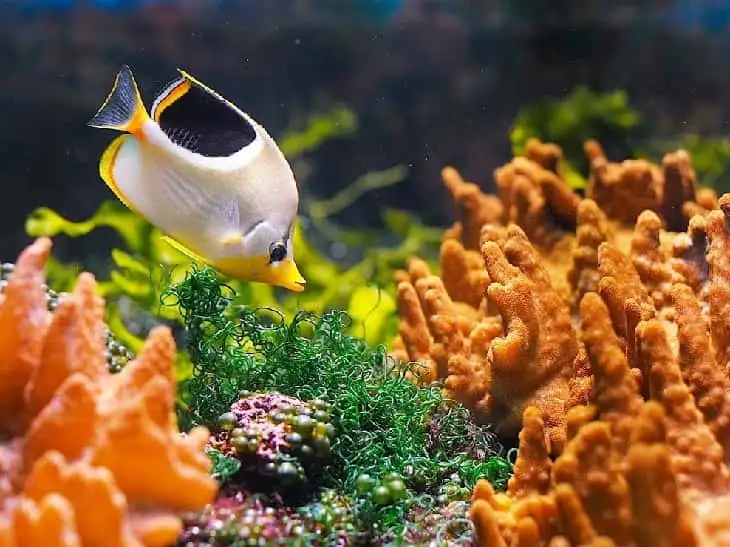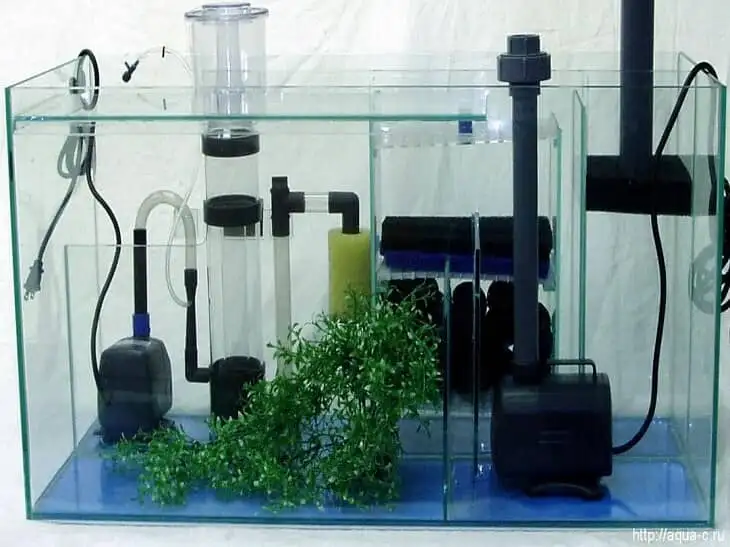A GUIDE TO CALCIUM CONCENTRATION IN A MARINE AQUARIUM

Calcium is essential for growth of coral algae and most invertebrates. It is rapidly absorbed during growth and needs to be replenished regularly. It is just one of a group of water parameters, including alkalinity, magnesium and salinity, which need to be carefully monitored to keep their concentration close to natural sea water parameters. In the case of calcium, it is somewhere around the 400-420 ppm mark. Coral growth and health could suffer if these mineral levels drop too low.
In many cases, freshly mixed salt water does not even come close to these levels, and it is often necessary to replenish the mineral levels. The chemistry of freshly prepared salt water depends on the type of salt you are using and the mineral content of the fresh water you are mixing with it. Some salts on the market are designed for use with hard, alkaline tap water, and if used in combination with reverse osmosis water, the resulting water will be missing some important chemicals, especially calcium and magnesium.
There are several salts on the market for use with reverse osmosis water that contain additional minerals to compensate for the low mineral content of the water. In many cases, the resulting saltwater is very similar to seawater, and in some cases, calcium and magnesium levels exceed those found in saltwater, which is considered even beneficial for most modern reef aquariums. Some aquarists are aiming for calcium levels of 450-480 parts per million in their aquariums.
Supply and Demand
How much calcium you need to apply depends on your system's calcium needs. If you have a lot of calcareous algae, as well as clams and hard corals, the demand for it will be quite high. You can get a rough idea of how much calcium is being consumed by measuring its concentration each day or week.
In some larger aquariums with many corals, the daily calcium demand can be as high as 30 parts per million, although it is usually much lower.
Calcium substrates such as coral sand, crushed coral, clam shells and dolomite are not very good for increasing calcium levels, pH and alkalinity because they do not dissolve until the pH drops below 7.6. Aragonite is better because it dissolves at pH 8.2, but it is often insufficient to restore the necessary balance, and it will likely only help maintain stable calcium levels.
For systems with a low calcium requirement, frequent changes of prepared seawater will be sufficient to maintain proper mineral levels in the water.
But if your calcium needs are higher, or if you are aiming for calcium, alkalinity and magnesium levels that are higher than those found in natural seawater, you need to add these minerals. There are several ways to do this:
Reactors
Calcium reactors are currently considered the best option because they control calcium, magnesium and alkalinity and add trace elements in a balanced manner. These devices are usually placed under the aquarium next to the sump and must be powered by a small water pump and supplied with carbon dioxide (CO2) from a pressurized cylinder.
By slowly running water through the aragonite-filled reactor and using CO2 to lower the pH, you can dissolve the aragonite faster, allowing it to release many minerals into the water. When properly operated, these reactors give excellent results. They are also much safer than some other forms of control and have less negative impact on the overall chemistry of the water.
Their only real drawback is the high cost. However, as our calculations show, it may actually make more sense to invest in a reactor than to use supplements if you have a large aquarium or high calcium requirement.
Supplements
To many aquarists, especially beginners, additives seem to be the easiest option. They are easy enough to add, and many are relatively cheap for small aquariums.
There are dozens of them on the market, many based on different concentrations of the same basic chemicals. If you can't afford to buy a reactor, these are probably your best choice. However, many of them can cause an imbalance in water chemistry with prolonged use. Some lead to excess sodium or chloride, which can affect salinity, for example, and with some additives it is easy to upset the balance between alkalinity and calcium levels.
There are several different groups of additives, each based on different chemicals, and each gives different overall chemical changes. However, it is not always clear what you are getting. Some manufacturers do not report exactly what is in their products, or report the concentration they provide.
Calcium supplements on the market fall into three main categories:
Calquasser
Calquasser, or lime water, is a very caustic liquid additive made by adding powdered calcium hydroxide (Ca(OH)2) to fresh water, usually by reverse osmosis. Once mixed, the clear part of the solution is added very slowly to the aquarium to compensate for evaporation losses. If done correctly, this can increase calcium and alkalinity levels. If not done correctly, this can lead to a dramatic increase in pH and a drop in alkalinity. Special gadgets are available to help both mix and add, making dosing much easier.
How Kalkwasser reacts with other chemicals in the water is a bit of a complicated process, so the effect it has depends on the initial chemistry of your system. Kalkwasser reacts with the CO2 present in the water and adds calcium and bicarbonate ions. If there is a lot of CO2, calcium bicarbonate (which increases alkalinity) is formed. If there is not enough CO2 or the pH is too high, some of the calcium precipitates into calcium carbonate, which is less soluble. Over time, this will cause the alkalinity to drop, which will have to be dealt with by adding buffers such as sodium bicarbonate.
This can be effective in maintaining good calcium and alkalinity levels, but some believe that it is much more difficult to get them to levels above those found in natural seawater, especially if evaporation rates are low and calcium requirements are high. There is also some evidence that this causes significant internal differences in coral growth.
Calcium Chloride Supplements
Most supplements on the market are based on anhydrous or dihydrate forms of calcium chloride - as liquids or powders. Calcium chloride itself increases calcium levels, but can eventually lead to a decrease in alkalinity, which must be compensated for by the addition of buffers.
Calcium chloride-based additives can be useful in aquariums with medium to low calcium requirements and are often used in combination with other additives, such as two-part additives and limestone. Calcium chloride-based additives can change water chemistry over time, especially with partial water changes.
Two-part supplements
Balanced two-part or three-part products, are an effective way to maintain good calcium and alkalinity levels. They add calcium and alkalinity in balanced ratios without upsetting the balance of water chemistry.
The individual parts are kept in separate bottles to prevent them from reacting and forming insoluble chemicals. In fact, when mixed, they form a kind of mixture of salts with very high levels of calcium. They are always in liquid form - if they were in powder form, moisture in the air would cause insoluble calcium carbonate to form. Some reefers use calcium chloride-based additives to provide an initial boost or make small adjustments and then maintain those high levels with two-component solutions.
Some of these can cause a slight increase in water specific gravity, so this should be monitored closely.
What to aim for Opinions vary on optimal levels, but they should always meet or slightly exceed the levels seen in natural seawater:
- Calcium 400 - 420mg/L.
- Alkalinity 7 - 10 dKH/ 2.5 - 3.5 mEq/L
- Magnesium 1200 -1300 mg/l
- pH 8,2 - 8,3
- Salinity 35-36ppt
Dosing
- Do not dose without first checking the calcium, magnesium, alkalinity and pH concentrations. Even if the manufacturer of the supplement you are using suggests adding it daily or weekly, you may not need to. The amount you need to add varies depending on the calcium requirements of your corals.
- It is becoming more and more common to raise calcium and alkalinity levels higher than in natural seawater. But if you raise them too high, calcium and carbonate will precipitate out.
- Magnesium levels are especially important when you are adding calcium. Ideally, it should be between 1,300 and 1,500 parts per million - if it's lower, it can be harder to raise calcium levels. A slightly higher salinity level allows you to maintain higher alkalinity and calcium levels.



